Given alongside is a diagram of the external features of the heart.i Name the parts ‘1’ to ‘7’.ii What happens if the coronary artery gets an internal clot ?iii Which type of blood does part ‘5’ carry ?iv Mention one structural difference between part ‘5’ and ‘4’.
i 1. Aorta 2. Left atrium 3. Left ventricle 4. Dorsal aorta 5. Inferior vena cava 6.Superior vena cava 7. Pulmonary artery.ii If the coronary artery gets an internal clot the corresponding part of the heart does not get its blood supply. This will result in loss of contraction or even death of the cardiac cells resulting in a heart attack or coronary arrest which may prove to be fatal.iii Part ‘5’ which is the inferior vena cava carries deoxygenated blood which is rich in CO2 and metabolic wastes.iv Part ‘5’ is more muscular and lumen is narrow while part ‘4’ is less muscular and lumen is wider.
Related Solutions
Given below is a diagram of the external features of the heart: What happens if the coronary artery gets an internal clot?
View SolutionGiven alongside is a diagram of the human heart showing its internal structure. Label the parts marked 1 to 6, and answer the following questions.

Name the main artery which takes the blood from heart to different parts of the body.View SolutionGiven below is a diagram of the external features of the heart: Name the parts 1 to 7.
View SolutionGiven below is a diagram of the external features of the heart:
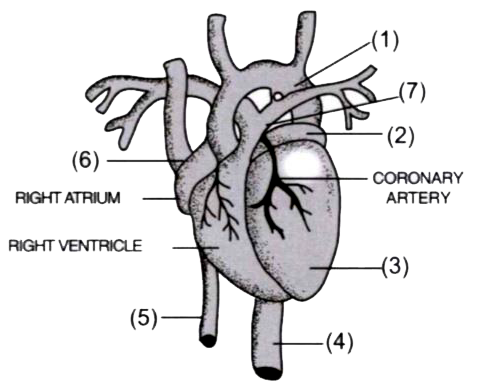
Mention one structural difference between 5 and 4View SolutionGiven below is a diagram of the external features of the heart:
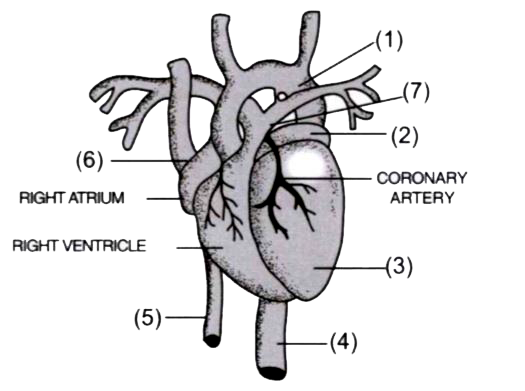
What type of blood does '5' carry?View SolutionGiven alongside is a diagram of the human heart showing its internal structure. Label the parts marked 1 to 6, and answer the following questions. Which type of blood is carried by the blood vessel marked 2 ?
View SolutionGiven alongside is a diagrammatic sketch of a part in human lungs (i) Name the parts numbered 1-4 (ii) What do the arrows 5 and 6 indicate ?
View Solution(a) List two reasons for the appearance of variations among the progeny formed by sexual reproduction. (b) (1) Name the part marked 'A' in the diagram alongside. (ii) How does 'A' reaches part 'B' ? (iii) State the importance of the part 'C'. (iv) What happens to the part marked 'D' after fertilisation is over ?
View SolutionWhich enzyme dissolves blood clots in the coronary artery?
View SolutionWhich enzyme dissolves blood clots in the coronary artery?
View SolutionGiven below is a diagram of a human blood smear. Study the diagram and answer the questons that follow:
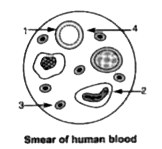
Mention two structural differences between the parts '1' and 2.View SolutionIn the diagram drawn alongside (i) Label the parts a, b and c. (ii) In which part does the light reaction occur? (iii) Name the part which the dark phase of photosynthesis occur in.
View SolutionIn the given diagram identify parts, named 1-5:
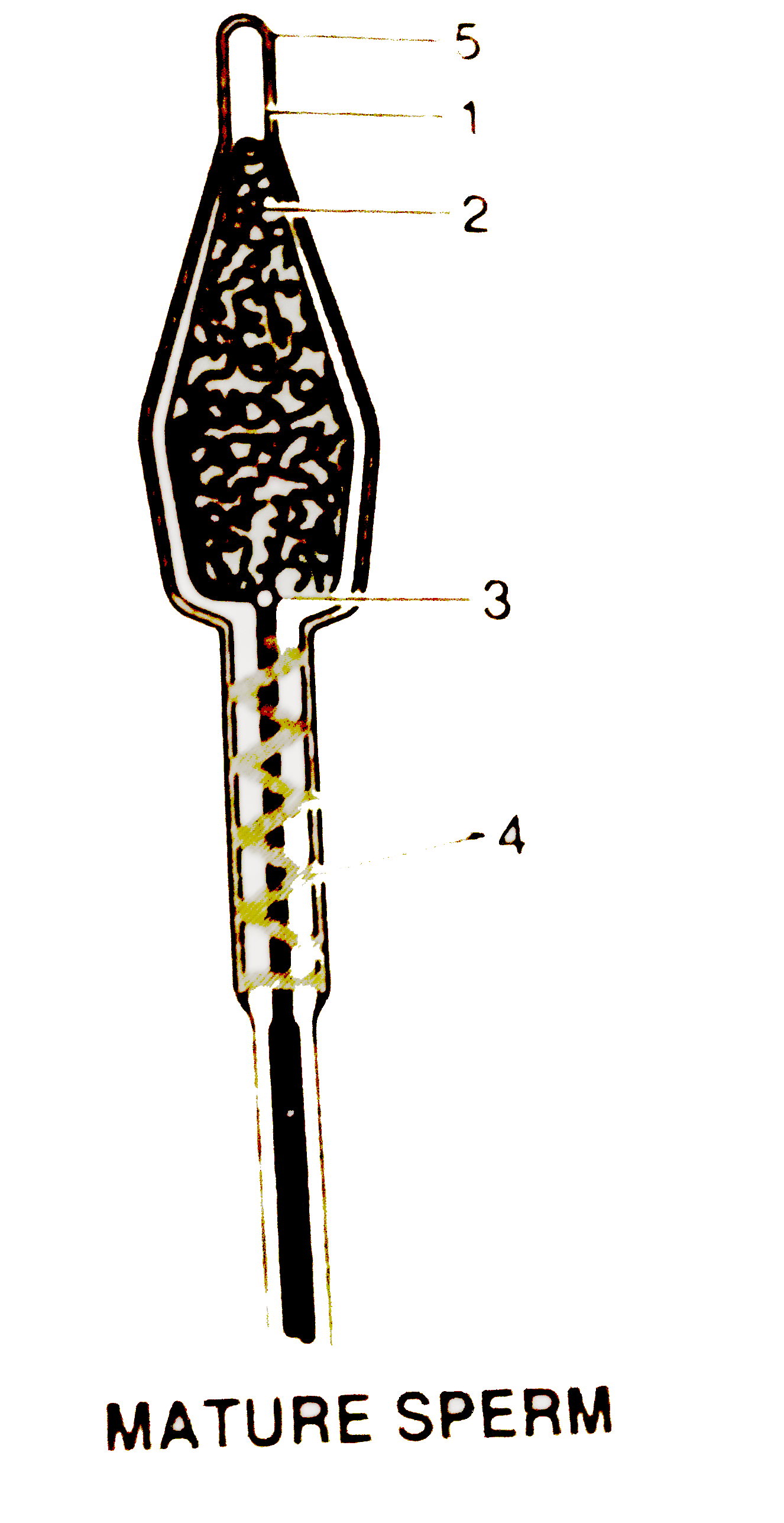 View Solution
View SolutionIdentify the given diagram. Name the parts 1 to 5.
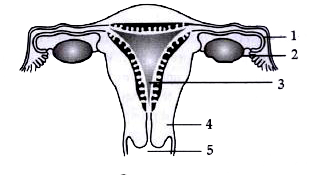 View Solution
View Solutionकोरोनरी धमनी में रक्त के थक्के को ……………. एन्जाइम की सहायता से घोला जा सकता है ।
View Solutionधमनियां शुद्ध या .......................... रक्त हो हृदय से शरीर से विभिन्न भागों में ले जाती है।
View Solutionधमनियां शुद्ध या .......................... रक्त हो हृदय से शरीर से विभिन्न भागों में ले जाती है।
View SolutionThe given diagram is an outline of human body showing the posttion of certain organs. In this diagram (I) Name the parts labelled 1-5. (ii) Name the hormone released from 1 that influences the working of part 2. (iil) How do part labelled as 3 differs from parts labelled as 1 and 2 in general? Name the endocrine cells present in part 3. (iv) What will happen if the part labelled as 4 is removed ? (11) Name the hormones released by part 5. (VI) Why the part labelled as 1 called master gland? Which part of the forebrain controls the gland labelled 1 ? (vii) Name the gland that secretes 'emergency hormone.
View SolutionWhich one takes part in blood clotting ?
View SolutionWhich one takes part in blood clotting?
View Solution
